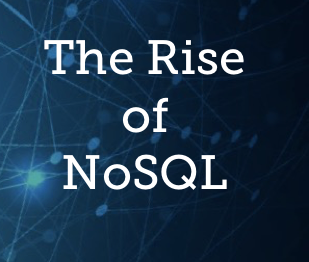The need for data mapping tools in light of increasing volumes and varieties of data – as well as the velocity at which it must be processed – is growing.
It’s not difficult to see why either. Data mapping tools have always been a key asset for any organization looking to leverage data for insights.
Isolated units of data are essentially meaningless. By linking data and enabling its categorization in relation to other data units, data mapping provides the context vital for actionable information.
Now with the General Data Protection Regulation (GDPR) in effect, data mapping has become even more significant.
The scale of GDPR’s reach has set a new precedent and is the closest we’ve come to a global standard in terms of data regulations. The repercussions can be huge – just ask Google.
Data mapping tools are paramount in charting a path to compliance for said new, near-global standard and avoiding the hefty fines.
Because of GDPR, organizations that may not have fully leveraged data mapping for proactive data-driven initiatives (e.g., analysis) are now adopting data mapping tools with compliance in mind.
Arguably, GDPR’s implementation can be viewed as an opportunity – a catalyst for digital transformation.
Those organizations investing in data mapping tools with compliance as the main driver will definitely want to consider this opportunity and have it influence their decision as to which data mapping tool to adopt.
With that in mind, it’s important to understand the key differentiators in data mapping tools and the associated benefits.
Data Mapping Tools: Automated or Manual?
In terms of differentiators for data mapping tools, perhaps the most distinct is automated data mapping versus data mapping via manual processes.
Data mapping tools that allow for automation mean organizations can benefit from in-depth, quality-assured data mapping, without the significant allocations of resources typically associated with such projects.
Eighty percent of data scientists’ and other data professionals’ time is spent on manual data maintenance. That’s anything and everything from addressing errors and inconsistencies and trying to understand source data or track its lineage. This doesn’t even account for the time lost due to missed errors that contribute to inherently flawed endeavors.
Automated data mapping tools render such issues and concerns void. In turn, data professionals’ time can be put to much better, proactive use, rather than them being bogged down with reactive, house-keeping tasks.
FOUR INDUSTRY FOCUSSED CASE STUDIES FOR AUTOMATED METADATA-DRIVEN AUTOMATION
(BFSI, PHARMA, INSURANCE AND NON-PROFIT)
As well as introducing greater efficiency to the data governance process, automated data mapping tools enable data to be auto-documented from XML that builds mappings for the target repository or reporting structure.
Additionally, a tool that leverages and draws from a single metadata repository means that mappings are dynamically linked with underlying metadata to render automated lineage views, including full transformation logic in real time.
Therefore, changes (e.g., in the data catalog) will be reflected across data governance domains (business process, enterprise architecture and data modeling) as and when they’re made – no more juggling and maintaining multiple, out-of-date versions.
It also enables automatic impact analysis at the table and column level – even for business/transformation rules.
For organizations looking to free themselves from the burden of juggling multiple versions, siloed business processes and a disconnect between interdepartmental collaboration, this feature is a key benefit to consider.
Data Mapping Tools: Other Differentiators
In light of the aforementioned changes to data regulations, many organizations will need to consider the extent of a data mapping tool’s data lineage capabilities.
The ability to reverse-engineer and document the business logic from your reporting structures for true source-to-report lineage is key because it makes analysis (and the trust in said analysis) easier. And should a data breach occur, affected data/persons can be more quickly identified in accordance with GDPR.
Article 33 of GDPR requires organizations to notify the appropriate supervisory authority “without undue delay and, where, feasible, not later than 72 hours” after discovering a breach.
As stated above, a data governance platform that draws from a single metadata source is even more advantageous here.
Mappings can be synchronized with metadata so that source or target metadata changes can be automatically pushed into the mappings – so your mappings stay up to date with little or no effort.
The Data Mapping Tool For Data-Driven Businesses
Nobody likes manual documentation. It’s arduous, error-prone and a waste of resources. Quite frankly, it’s dated.
Any organization looking to invest in data mapping, data preparation and/or data cataloging needs to make automation a priority.
With automated data mapping, organizations can achieve “true data intelligence,”. That being the ability to tell the story of how data enters the organization and changes throughout the entire lifecycle to the consumption/reporting layer. If you’re working harder than your tool, you have the wrong tool.
The manual tools of old do not have auto documentation capabilities, cannot produce outbound code for multiple ETL or script types, and are a liability in terms of accuracy and GDPR.
Automated data mapping is the only path to true GDPR compliance, and erwin Mapping Manager can get you there in a matter of weeks thanks to our robust reverse-engineering technology.
Learn more about erwin’s automation framework for data governance here.



